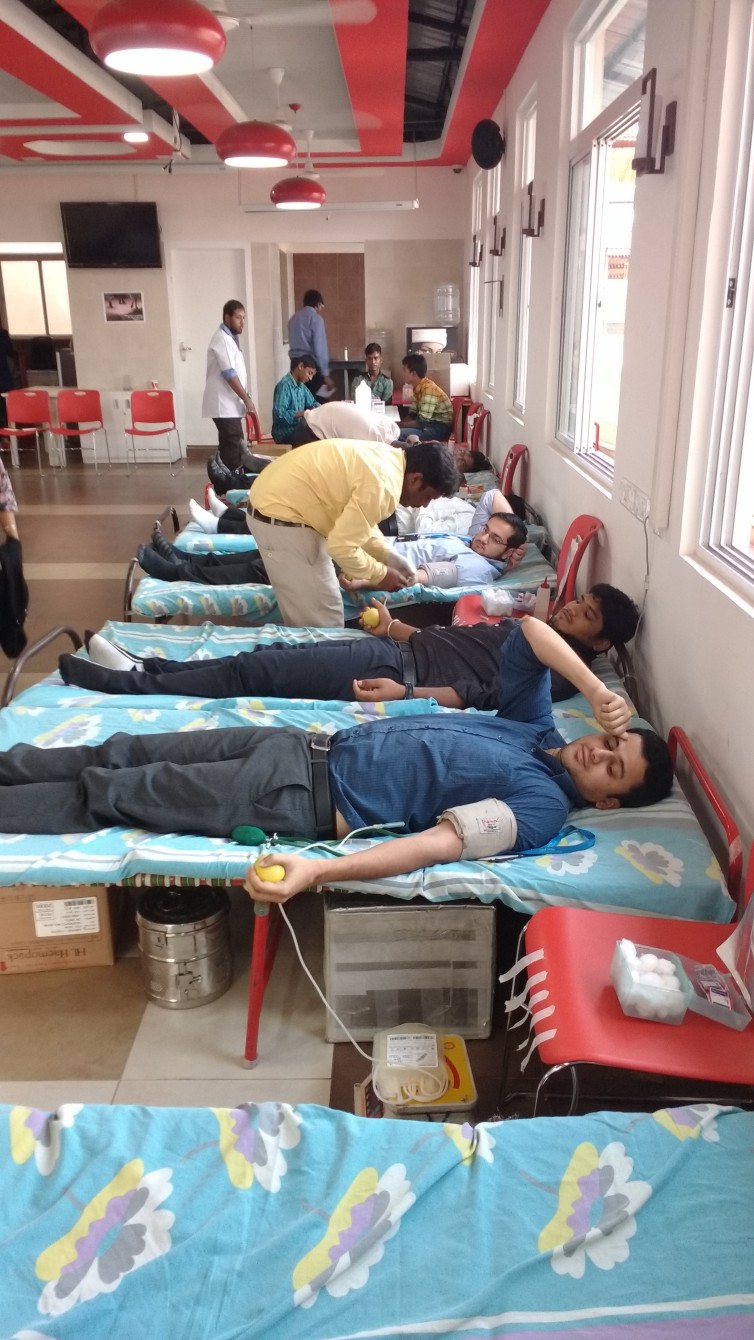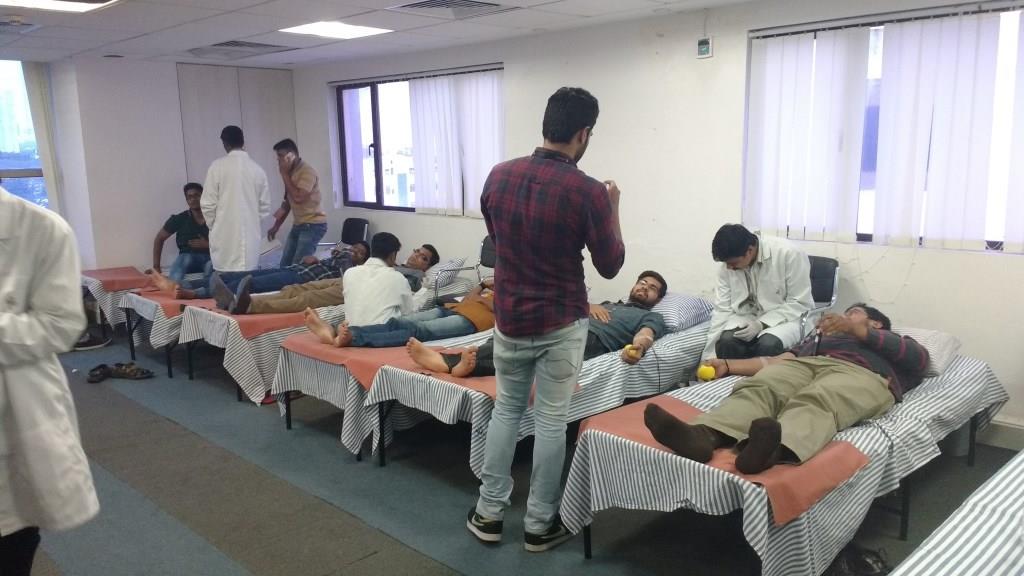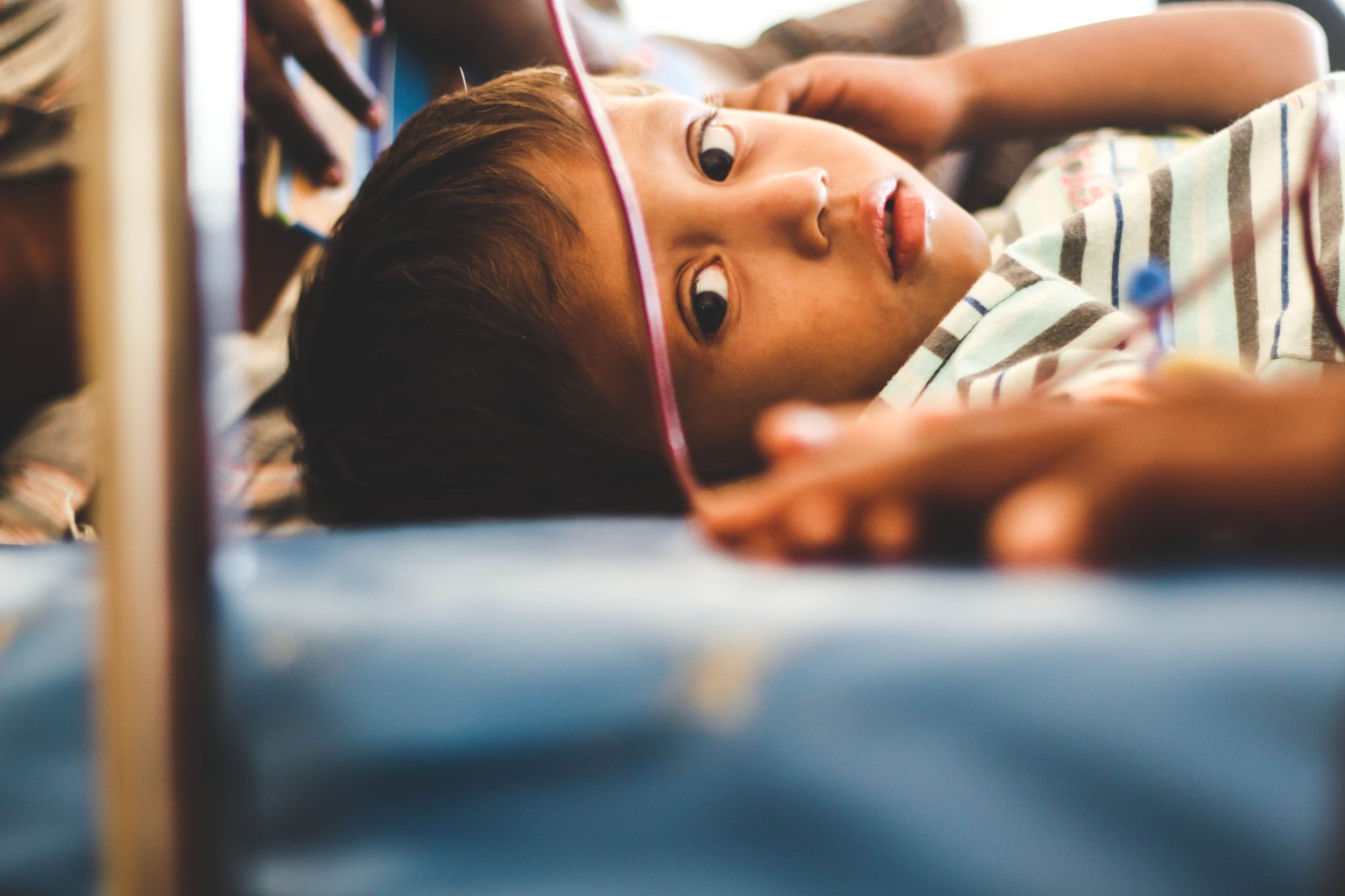Sustained efforts through the winter weeks of December saw a few blood donation drives materialize in the month of January 2016. Plenty of small blood donation drives in apartments and malls were organized right through the month.
In total 743 units were collected in 17 blood donation drives.
The other statistics for the month was deviant from the usual numbers by good percentages. The rate of adverse reactions was at 2.69% - an all-time low for a month for several months. The rate of deferrals was at 17.45% which is less than the average of about 20%. The rate of non-compliance was surprisingly was quite high at 1.88/camp. Here is a brief note of the events in January.  MG Apartments, Neela Apartments, Mantri Espana, Star Bazaar and Terapanth Yuva Sangh were all community based or public or small camps held over the weekends in the month. As is the case with public camps, a lot of effort was spent in publicity. Posters, sessions, banners, brochure distribution at public places were all carried out. Numbers in some of these camps was much lower than expected. However, the efforts of the organizers to respond to the call for help in a month when corporate drives were not as many is commendable. In terms of corporate, we had the first blood donation drive for the year at Applied Materials – a long time friendly and supportive organization who responded to the call of an emergency blood donation drive in the 2nd week of the new year within 48 hours. This commitment is truly commendable. Hilton hotels also supported the cause of blood donation drives with drives at both their locations in Bangalore. Enthusiastic hotel employees donated in batches despite their busy work schedule which proves that it is not work schedule but determination to make a difference that contributes to the success of drives at organizations. Xentrix Studios continued their rich tradition of blood donation drives every 6 months by having another round of drives in the month. Positive steps taken for publicity saw the best turnout in Xentrix for quite some time. Kudos to their commitment. We also found support from trusted partners like National Instruments and Xerox Corporation. Both these organizations not only support us with regular blood donation drives every 6 months but also play the role of a leader in their respective tech parks by pulling together all companies to come together for a common cause. Many thanks to them. Chelsio communications, Thought focus and Synchronoss also deserve credit for motivating their employees well to donate in the drive at Subramanya Arcade.
MG Apartments, Neela Apartments, Mantri Espana, Star Bazaar and Terapanth Yuva Sangh were all community based or public or small camps held over the weekends in the month. As is the case with public camps, a lot of effort was spent in publicity. Posters, sessions, banners, brochure distribution at public places were all carried out. Numbers in some of these camps was much lower than expected. However, the efforts of the organizers to respond to the call for help in a month when corporate drives were not as many is commendable. In terms of corporate, we had the first blood donation drive for the year at Applied Materials – a long time friendly and supportive organization who responded to the call of an emergency blood donation drive in the 2nd week of the new year within 48 hours. This commitment is truly commendable. Hilton hotels also supported the cause of blood donation drives with drives at both their locations in Bangalore. Enthusiastic hotel employees donated in batches despite their busy work schedule which proves that it is not work schedule but determination to make a difference that contributes to the success of drives at organizations. Xentrix Studios continued their rich tradition of blood donation drives every 6 months by having another round of drives in the month. Positive steps taken for publicity saw the best turnout in Xentrix for quite some time. Kudos to their commitment. We also found support from trusted partners like National Instruments and Xerox Corporation. Both these organizations not only support us with regular blood donation drives every 6 months but also play the role of a leader in their respective tech parks by pulling together all companies to come together for a common cause. Many thanks to them. Chelsio communications, Thought focus and Synchronoss also deserve credit for motivating their employees well to donate in the drive at Subramanya Arcade.  The start of the year is always quite challenging to have continuous blood donation drives, yet the support of all these organizations made a very meaningful contribution to the blood supply in the city of Bangalore.
The start of the year is always quite challenging to have continuous blood donation drives, yet the support of all these organizations made a very meaningful contribution to the blood supply in the city of Bangalore.
Thalassemia Management and Care
In January, we had 288 patient visits with 386 blood transfusions at Indira Gandhi Institute of Child Health. On an average 4 days old blood products were issued and we had median pre-transfusion haemoglobin of 8.1 g/dl. Almost all units were available in-house. The patient's spent 7.25 hours in the hospital. The main concern at the hospital is the high number of patients who are now coming for management. A new ward is under constructions and expected t be commissioned soon which will help increase the capacity to about 25 transfusions per day. In January, we also took a closer look at the patients suffering from haemoglobin disorders other than thalassemia. A principle challenge in these situations is that the confirmatory diagnosis is not available in-house at the hospital. Together with the hospital, we have decided to formulate a strategy to arrive at firm conclusions on cases which need further investigation to confirm diagnosis and then lay out disease specific treatment plans for a long term.  The third challenge is that of management of kids who have large spleen and liver in-spite of sustained hyper transfusion therapy. Such children are more prone to crisis and they require more transfusions. In Samraksha, we have seen remarkable improvement in this group of kids with the use of hydroxyurea. Not only does hydroxyurea help decrease the liver and spleen size for the responders, it also helps reduce blood transfusion requirement and accelerates control of ferritin in some cases. We plan to work towards reversing the complications of the liver and spleen that we are already seeing. With a new full time doctor at the thalassemia unit in IGICH, things are more promising. Together with the support from the whole team at the hospital, we aim at continued delivery of quality care to each child. At Samraksha, we crossed the 200 patient mark in the month of January. We had 235 patient visits and 305 blood transfusions. On an average blood products were just 2 days old and median pre-transfusion haemoglobin was 8.6 gm/dl. All units were available in-house from Rashtrotthana blood bank. Project Samraksha has been waging a war on high ferritin levels. This centre usually get's children who come with a history of very poor management and high ferritin levels. However, by sustained attempts the median ferritin levels have fallen from 4000 to about 2650. Of course there is still a long way to go. Samraksha is making a significant impact in the direction of enable good quality of life for individuals living with thalassemia when it comes to the aspect of professional accomplishment and education. Bangalore is the hub for employment and education and attracts youngsters from all over the country. However, parents of individuals suffering from thalassemia tend to be very reluctant to allow their wards to stay alone. The good news is more of such young people are getting permissions from their families to stay in Bangalore and pursue their dreams. Once the parents come and see how smooth and friendly the whole system is, they are reassured. With about 12 children in the post transplant follow-up phase and another 20 in the preparatory phase, Samraksha also has a lot of work in the direction of offering cure to the children with thalassemia.
The third challenge is that of management of kids who have large spleen and liver in-spite of sustained hyper transfusion therapy. Such children are more prone to crisis and they require more transfusions. In Samraksha, we have seen remarkable improvement in this group of kids with the use of hydroxyurea. Not only does hydroxyurea help decrease the liver and spleen size for the responders, it also helps reduce blood transfusion requirement and accelerates control of ferritin in some cases. We plan to work towards reversing the complications of the liver and spleen that we are already seeing. With a new full time doctor at the thalassemia unit in IGICH, things are more promising. Together with the support from the whole team at the hospital, we aim at continued delivery of quality care to each child. At Samraksha, we crossed the 200 patient mark in the month of January. We had 235 patient visits and 305 blood transfusions. On an average blood products were just 2 days old and median pre-transfusion haemoglobin was 8.6 gm/dl. All units were available in-house from Rashtrotthana blood bank. Project Samraksha has been waging a war on high ferritin levels. This centre usually get's children who come with a history of very poor management and high ferritin levels. However, by sustained attempts the median ferritin levels have fallen from 4000 to about 2650. Of course there is still a long way to go. Samraksha is making a significant impact in the direction of enable good quality of life for individuals living with thalassemia when it comes to the aspect of professional accomplishment and education. Bangalore is the hub for employment and education and attracts youngsters from all over the country. However, parents of individuals suffering from thalassemia tend to be very reluctant to allow their wards to stay alone. The good news is more of such young people are getting permissions from their families to stay in Bangalore and pursue their dreams. Once the parents come and see how smooth and friendly the whole system is, they are reassured. With about 12 children in the post transplant follow-up phase and another 20 in the preparatory phase, Samraksha also has a lot of work in the direction of offering cure to the children with thalassemia.
Emergency Team and the Blood Helpline
The emergency team was kept busy with the 10 Bombay blood requests which they got for a total of 22 units. The requests came for 8 female and 3 male patients from Bangalore, Bellary, Chennai, Cuddalore, East Godavari, Hyderabad, Jamnagar, Karim Nagar and Pondicherry. However, the competency of the team and the networking which has been established makes it possible to organise the rarest of rare blood units with ease. Based upon the suggestion of our team in 3 out of 10 requests, alternates to allogenic blood transfusions including use of autologous blood and use of erythropoietin were used. Autologous blood transfusion is when a person donates blood for him/herself a few days prior to an elective surgery and erythropoietin is an injection which promotes the production of blood in the body - thus saving the patient from having to use dome other donor's blood. The team got 6 units donated and organised another 4 units which were available off the shelf in some blood bank. Single donor platelets requests have become routine for the team with a few requests coming each day. The team intends to have voluntarily donated single donor platelets available on the shelf in at least 1 blood bank all the time and is working towards the goal. For now, the patient's family continue to be arm-twisted to get donors to the hospitals and the donors are asked to donate in urgent situations. We also received 698 blood requests from 29 cities in January on our blood helpline number. There were fewer platelets requests than past months. Also, we had almost equal number of negative and positive blood group requests.
